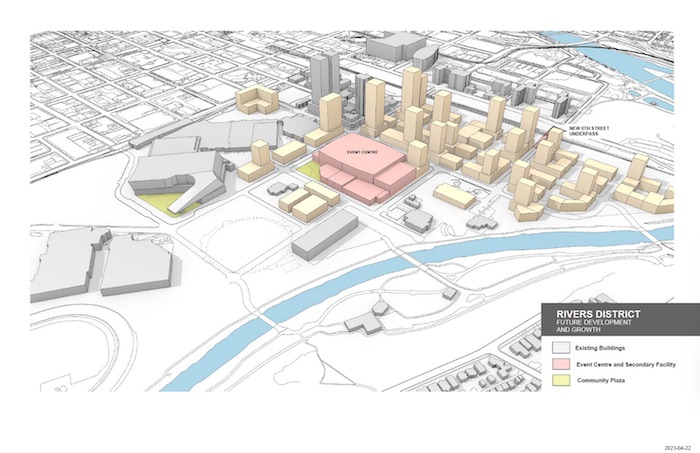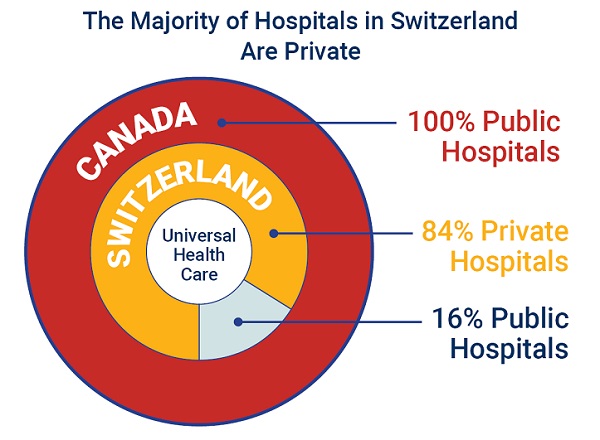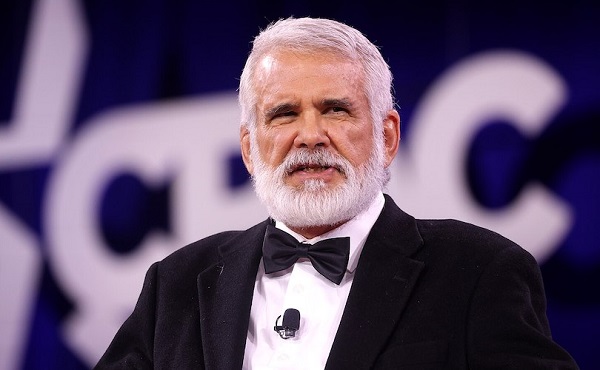Alberta
Revitalizing downtown Calgary: Province

Alberta’s government is investing up to $330 million over five years to support the Calgary Rivers District and Event Centre and revitalize downtown Calgary.
In April 2023, Alberta’s government signed a memorandum of understanding with the City of Calgary and Calgary Exhibition and Stampede Ltd. to invest in infrastructure to support the new event centre while revitalizing Calgary’s Rivers District, the Stampede grounds and downtown. The provincial funding has now been approved by cabinet and Treasury Board.
“Calgary is a city of big dreams, big projects and big expectations. Our investment in the Rivers District is one that helps build Calgary and continues the momentum of revitalization in the downtown core. It’s one more shot of energy for Calgary’s culture, entertainment and business scenes, and the city and province will reap the economic benefits for decades to come.”
The funding will support land acquisition, site utilities and transportation infrastructure for the Calgary arena and entertainment district project. The investment will also cover 50 per cent of the construction costs of a new 1,000-seat community arena that will serve youth and amateur hockey. Once complete, the Rivers is expected to create 1,500 permanent jobs and welcome an estimated 8,000 new residents and three million annual visitors to the Culture and Entertainment District.
“Alberta is proud to be a key funding partner for this project to help ensure Calgary has the infrastructure it needs to support a vibrant events district, enhance the downtown core and promote economic development, now and in the future. This contribution is an investment in the long-term economic sustainability of Calgary’s downtown.”
“This community rink will add to Calgary’s already vibrant downtown. It will provide a hub for athletes and their families to gather, share in a love for sport and make lifelong connections. And the increase in visitors to the area will help spur the local economy.”
“The Calgary Rivers District and Event Centre project will provide a tremendous boost to the local economy and create thousands of planning, design and construction-related jobs. Infrastructure will support our partner ministries in any we can to ensure the project is completed in an efficient and timely manner, and that Calgarians get the top-notch arena and entertainment district they’ve been waiting for.”
“Our province has a strong history of hosting major national and international events. I see great synergy and potential to grow Calgary’s reputation as a global destination for festivals and sporting events through our government’s continued investment.”
The province’s investment in the project includes new transportation infrastructure and improvements to existing transportation infrastructure, indoor and outdoor gathering spaces, a community rink and demolition of the existing Saddledome. Once complete, the Rivers District project will add an estimated four million square feet of mixed-use development (homes, retail, hotels) in Calgary’s Culture and Entertainment District.
Agreements among all parties, including the City of Calgary, Calgary Sports and Entertainment Corporation and Calgary Stampede, have been signed and executed, paving the way for work to begin immediately.
“The completion of this project will bring benefits for all Calgarians, and we’re one step closer to its realization. We are fortunate to have partners, including the Government of Alberta, who realize the enormous potential that this district has for Calgary as a year-round hub of sports, arts and entertainment. It will attract commercial investment to our downtown core and contribute to our city’s vibrancy and economic growth.”
“At this critical moment when we are seeing explosive population growth and increasing private sector interest in our city, the confirmation that our Culture and Entertainment District is proceeding to design and construction phases will generate strong investor confidence. This project will create better public gathering spaces, improved transportation networks, a downtown community rink and an arena to drive events that spur hosting and tourism opportunities, along with creation of jobs in the construction, retail and entertainment sectors.”
Quick facts
- The total project cost is estimated at $1.22 billion:
- The City of Calgary will contribute $537.3 million (44 per cent).
- The remaining $686 million (56 per cent) of the project costs will be covered by the Alberta government ($330 million, 27 per cent) and the Calgary Sports and Entertainment Corp. ($356 million, 29 per cent).
Alberta
Alberta Premier Danielle Smith Discusses Moving Energy Forward at the Global Energy Show in Calgary

From Energy Now
At the energy conference in Calgary, Alberta Premier Danielle Smith pressed the case for building infrastructure to move provincial products to international markets, via a transportation and energy corridor to British Columbia.
“The anchor tenant for this corridor must be a 42-inch pipeline, moving one million incremental barrels of oil to those global markets. And we can’t stop there,” she told the audience.
The premier reiterated her support for new pipelines north to Grays Bay in Nunavut, east to Churchill, Man., and potentially a new version of Energy East.
The discussion comes as Prime Minister Mark Carney and his government are assembling a list of major projects of national interest to fast-track for approval.
Carney has also pledged to establish a major project review office that would issue decisions within two years, instead of five.
Alberta
Punishing Alberta Oil Production: The Divisive Effect of Policies For Carney’s “Decarbonized Oil”

From Energy Now
By Ron Wallace
The federal government has doubled down on its commitment to “responsibly produced oil and gas”. These terms are apparently carefully crafted to maintain federal policies for Net Zero. These policies include a Canadian emissions cap, tanker bans and a clean electricity mandate.
Following meetings in Saskatoon in early June between Prime Minister Mark Carney and Canadian provincial and territorial leaders, the federal government expressed renewed interest in the completion of new oil pipelines to reduce reliance on oil exports to the USA while providing better access to foreign markets. However Carney, while suggesting that there is “real potential” for such projects nonetheless qualified that support as being limited to projects that would “decarbonize” Canadian oil, apparently those that would employ carbon capture technologies. While the meeting did not result in a final list of potential projects, Alberta Premier Danielle Smith said that this approach would constitute a “grand bargain” whereby new pipelines to increase oil exports could help fund decarbonization efforts. But is that true and what are the implications for the Albertan and Canadian economies?
The federal government has doubled down on its commitment to “responsibly produced oil and gas”. These terms are apparently carefully crafted to maintain federal policies for Net Zero. These policies include a Canadian emissions cap, tanker bans and a clean electricity mandate. Many would consider that Canadians, especially Albertans, should be wary of these largely undefined announcements in which Ottawa proposes solely to determine projects that are “in the national interest.”
The federal government has tabled legislation designed to address these challenges with Bill C-5: An Act to enact the Free Trade and Labour Mobility Act and the Building Canada Act (the One Canadian Economy Act). Rather than replacing controversial, and challenged, legislation like the Impact Assessment Act, the Carney government proposes to add more legislation designed to accelerate and streamline regulatory approvals for energy and infrastructure projects. However, only those projects that Ottawa designates as being in the national interest would be approved. While clearer, shorter regulatory timelines and the restoration of the Major Projects Office are also proposed, Bill C-5 is to be superimposed over a crippling regulatory base.
It remains to be seen if this attempt will restore a much-diminished Canadian Can-Do spirit for economic development by encouraging much-needed, indeed essential interprovincial teamwork across shared jurisdictions. While the Act’s proposed single approval process could provide for expedited review timelines, a complex web of regulatory processes will remain in place requiring much enhanced interagency and interprovincial coordination. Given Canada’s much-diminished record for regulatory and policy clarity will this legislation be enough to persuade the corporate and international capital community to consider Canada as a prime investment destination?
As with all complex matters the devil always lurks in the details. Notably, these federal initiatives arrive at a time when the Carney government is facing ever-more pressing geopolitical, energy security and economic concerns. The Organization for Economic Co-operation and Development predicts that Canada’s economy will grow by a dismal one per cent in 2025 and 1.1 per cent in 2026 – this at a time when the global economy is predicted to grow by 2.9 per cent.
It should come as no surprise that Carney’s recent musing about the “real potential” for decarbonized oil pipelines have sparked debate. The undefined term “decarbonized”, is clearly aimed directly at western Canadian oil production as part of Ottawa’s broader strategy to achieve national emissions commitments using costly carbon capture and storage (CCS) projects whose economic viability at scale has been questioned. What might this mean for western Canadian oil producers?
The Alberta Oil sands presently account for about 58% of Canada’s total oil output. Data from December 2023 show Alberta producing a record 4.53 million barrels per day (MMb/d) as major oil export pipelines including Trans Mountain, Keystone and the Enbridge Mainline operate at high levels of capacity. Meanwhile, in 2023 eastern Canada imported on average about 490,000 barrels of crude oil per day (bpd) at a cost estimated at CAD $19.5 billion. These seaborne shipments to major refineries (like New Brunswick’s Irving Refinery in Saint John) rely on imported oil by tanker with crude oil deliveries to New Brunswick averaging around 263,000 barrels per day. In 2023 the estimated total cost to Canada for imported crude oil was $19.5 billion with oil imports arriving from the United States (72.4%), Nigeria (12.9%), and Saudi Arabia (10.7%). Since 1988, marine terminals along the St. Lawrence have seen imports of foreign oil valued at more than $228 billion while the Irving Oil refinery imported $136 billion from 1988 to 2020.
What are the policy and cost implication of Carney’s call for the “decarbonization” of western Canadian produced, oil? It implies that western Canadian “decarbonized” oil would have to be produced and transported to competitive world markets under a material regulatory and financial burden. Meanwhile, eastern Canadian refiners would be allowed to import oil from the USA and offshore jurisdictions free from any comparable regulatory burdens. This policy would penalize, and makes less competitive, Canadian producers while rewarding offshore sources. A federal regulatory requirement to decarbonize western Canadian crude oil production without imposing similar restrictions on imported oil would render the One Canadian Economy Act moot and create two market realities in Canada – one that favours imports and that discourages, or at very least threatens the competitiveness of, Canadian oil export production.
Ron Wallace is a former Member of the National Energy Board.
-

 National2 days ago
National2 days agoCarney promotes MP instrumental in freezing Freedom Convoy donors’ bank accounts
-

 Business2 days ago
Business2 days ago84% of Swiss hospitals and 60% of hospitalizations are in private facilities, and they face much lower wait times
-

 Business2 days ago
Business2 days agoThe carbon tax’s last stand – and what comes after
-

 conflict18 hours ago
conflict18 hours agoIran nuclear talks were ‘coordinated deception’ between US and Israel: report
-

 Health2 days ago
Health2 days agoRFK Jr. appoints Robert Malone, Martin Kulldorff, other COVID shot critics to overhauled CDC vaccine panel
-

 conflict1 day ago
conflict1 day agoIsrael strikes Iran, targeting nuclear sites; U.S. not involved in attack
-

 illegal immigration1 day ago
illegal immigration1 day agoLA protests continue as judge pulls back CA National Guard ahead of ‘No Kings Day’
-

 International21 hours ago
International21 hours agoIsrael’s Decapitation Strike on Iran Reverberates Across Global Flashpoints



